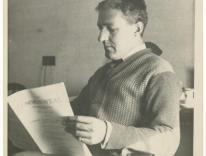According to a study analyzing US Census data:
The percentage of poor Americans who are living in severe povertyhas reached a 32-year high, millions of working Americans are fallingcloser to the poverty line and the gulf between the nation's "haves"and "have-nots" continues to widen.
A McClatchy Newspapers analysis of 2005 census figures, thelatest available, found that nearly 16 million Americans are living indeep or severe poverty. A family of four with two children and anannual income of less than $9,903 - half the federal poverty line - wasconsidered severely poor in 2005. So were individuals who made lessthan $5,080 a year.
The McClatchy analysis found that the number of severely poorAmericans grew by 26 percent from 2000 to 2005. That's 56 percentfaster than the overall poverty population grew in the same period.McClatchy's review also found statistically significant increases inthe percentage of the population in severe poverty in 65 of 215 largeU.S. counties, and similar increases in 28 states. The review alsosuggested that the rise in severely poor residents isn't confined tolarge urban counties but extends to suburban and rural areas.
The plight of the severely poor is a distressing sidebar to anunusual economic expansion. Worker productivity has increaseddramatically since the brief recession of 2001, but wages and jobgrowth have lagged behind. At the same time, the share of nationalincome going to corporate profits has dwarfed the amount going to wagesand salaries. That helps explain why the median household income ofworking-age families, adjusted for inflation, has fallen for fivestraight years. These and other factors have helped push 43 percent of thenation's 37 million poor people into deep poverty - the highest ratesince at least 1975.
Good thing we have such a robust safety net to help those slipping through the cracks of the free market. Oops. Here's the other troubling piece of the puzzle (HT TNR):
The Census Bureau's Survey of Income and Program Participation showsthat, in a given month, only 10 percent of severely poor Americansreceived Temporary Assistance for Needy Families in 2003--the latestyear available--and that only 36 percent received food stamps.
Manycould have exhausted their eligibility for welfare or decided that thenew program requirements were too onerous. But the low participationrates are troubling because the worst byproducts of poverty, such ashigher crime and violence rates and poor health, nutrition andeducational outcomes, are worse for those in deep poverty.


